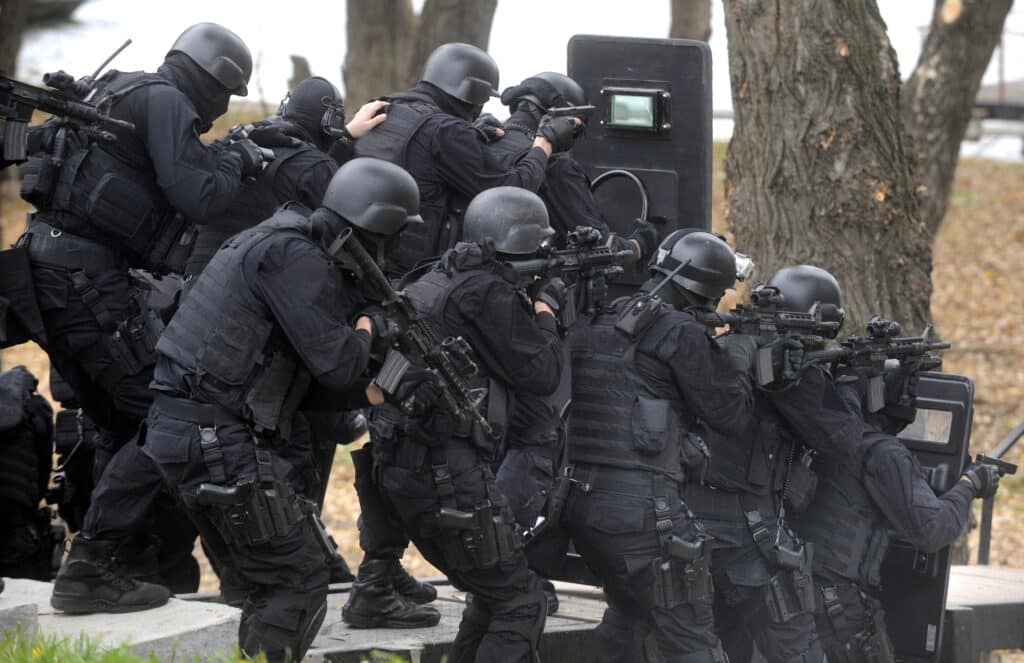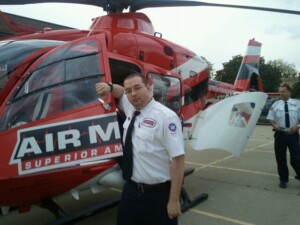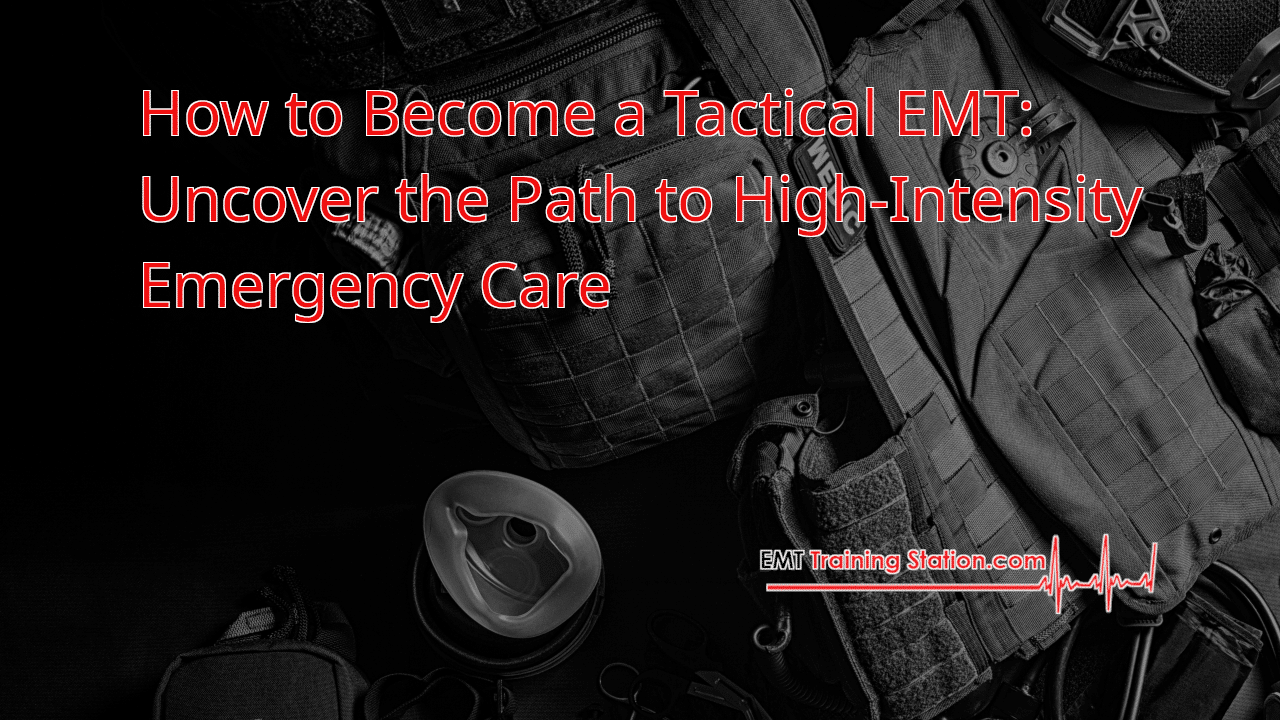Tactical Emergency Medical Services (TEMS) presents an exciting and challenging career path for emergency medical technicians (EMTs) and paramedics looking to apply their skills and expertise in high-risk law enforcement environments. As a specialized field within emergency medicine, TEMS professionals work alongside Special Weapons and Tactics (SWAT) teams and other specialized law enforcement units, providing critical medical support during high-stakes operations. For EMTs and paramedics seeking a unique and dynamic career opportunity, TEMS offers a chance to make a significant impact by bridging the gap between medical care and tactical response.
Entering the field of TEMS requires a commitment to rigorous training, a willingness to adapt to unconventional and high-pressure situations, and the ability to function effectively as part of a tactical team. In this role, EMTs and paramedics are responsible for treating injured officers, suspects, and civilians while also providing preventive care and medical advice to SWAT team members during operations. By choosing a career in Tactical EMS, EMTs and paramedics can take their medical expertise to the front lines of law enforcement, ultimately helping to save lives and ensure the safety of both officers and civilians in some of the most challenging and high-risk scenarios.
Table of Contents
The History of Tactical EMS

Tactical Emergency Medical Services (TEMS) is a specialized field within emergency medicine that focuses on providing medical support during high-risk law enforcement operations, such as those involving Special Weapons and Tactics (SWAT) teams. The history of TEMS and its role in SWAT teams can be traced back to the late 20th century.
The concept of Tactical EMS started to emerge in the 1970s and 1980s when it became apparent that traditional emergency medical services were not always sufficient to address the unique challenges posed by high-risk law enforcement operations. In particular, the 1972 Munich Olympics massacre and subsequent hostage situations highlighted the need for better medical support during tactical operations.
In the 1980s and 1990s, a number of law enforcement agencies in the United States began to develop specialized tactical medical programs. Paramedics and emergency medical technicians (EMTs) were trained to operate in high-threat environments and provide medical support to SWAT teams during their operations. This was done to minimize the time between injury and treatment, ultimately saving lives.
TEMS personnel were integrated with SWAT teams in various capacities, such as being embedded within the team or providing support from a safe distance. Their roles included treating injured officers, suspects, and civilians; providing preventive care to team members; and advising on medical aspects of tactical planning.
As the field of Tactical EMS evolved, specialized training programs were developed to equip medical professionals with the skills needed to function effectively in high-risk law enforcement environments. In 2003, the National Association of Emergency Medical Technicians (NAEMT) launched the Tactical Combat Casualty Care (TCCC) course, which later became the basis for the Tactical Emergency Casualty Care (TECC) course. These courses, along with other TEMS-specific training programs, have become the standard for tactical medical training.
In recent years, the principles of Tactical EMS have been adapted to civilian settings, particularly in response to mass casualty incidents, such as active shooter situations, terrorist attacks, and natural disasters. The lessons learned from the TEMS field have been used to improve the response and treatment of casualties in these situations.
Today, Tactical EMS is a vital component of SWAT teams and other specialized law enforcement units. Its personnel play a critical role in ensuring the safety and well-being of both law enforcement officers and civilians during high-risk operations.
Tactical EMS Roles and Responsibilities
A Tactical Emergency Medical Technician (EMT) plays a crucial role in providing medical support during high-risk law enforcement operations, such as those involving Special Weapons and Tactics (SWAT) teams. These specially trained professionals are responsible for administering emergency medical care in challenging and often dangerous environments, ensuring the safety and well-being of both law enforcement officers and civilians.
Among the primary responsibilities of a tactical EMT is the assessment, treatment, and stabilization of injured individuals during tactical operations. This may include managing trauma injuries, gunshot wounds, and other life-threatening conditions. In addition to addressing acute medical needs, tactical EMTs also provide preventive care for SWAT team members, helping to reduce the risk of injury or illness during high-stress missions.
Another critical aspect of a tactical EMT’s role is their ability to adapt and function effectively within the operational parameters of the SWAT team. This requires a deep understanding of tactical concepts, strong communication skills, and the ability to make rapid decisions under pressure. Tactical EMTs must be prepared to operate in a variety of environments, from urban settings to remote locations, and be familiar with the unique challenges associated with each.
The role of a tactical EMT extends beyond traditional emergency medical services, requiring a unique blend of medical expertise and tactical acumen. These professionals play an indispensable role in high-risk law enforcement operations, contributing to the safety and success of both SWAT teams and the communities they serve.

Common Battlefield Trauma in Tactical EMS
Tactical Emergency Medical Services (TEMS) personnel often encounter various forms of battlefield trauma during high-risk law enforcement operations. These medical professionals must be prepared to address a range of injuries, many of which can be life-threatening if not treated promptly and effectively. Some common battlefield trauma injuries encountered by tactical EMS personnel include:
- Hemorrhage from extremity wounds: Extremity wounds, such as those caused by gunshot or stabbing, can result in significant blood loss. Rapid blood loss can lead to hemorrhagic shock and, ultimately, death. Tactical EMS providers must be skilled in controlling bleeding through the use of tourniquets, pressure dressings, and hemostatic agents. The prompt application of these techniques can prevent further blood loss and save lives.
- Junctional hemorrhage: Junctional hemorrhages occur in areas where the extremities meet the torso, such as the neck, axilla (armpit), and groin. These areas can be challenging to treat due to the difficulty of applying direct pressure or tourniquets. In such cases, specialized junctional tourniquets or hemostatic dressings may be used to control bleeding. Tactical EMS personnel must be proficient in the management of junctional hemorrhages to stabilize patients and prevent life-threatening complications.
- Non-compressible hemorrhage: Non-compressible hemorrhages occur in areas of the body where direct pressure or tourniquets cannot be applied, such as the chest or abdomen. These injuries can be particularly challenging to manage in a tactical environment, as they often require surgical intervention. Tactical EMS providers must be able to recognize the signs of non-compressible hemorrhage and initiate rapid evacuation to a medical facility where definitive care can be provided.
- Tension pneumothorax: A tension pneumothorax occurs when air accumulates in the pleural space between the lung and chest wall, leading to increased pressure and ultimately causing the affected lung to collapse. This condition can be life-threatening, as it can result in decreased blood flow to the heart and inadequate oxygenation of the body. Tactical EMS personnel must be able to recognize the signs of tension pneumothorax, such as difficulty breathing, chest pain, and decreased breath sounds on the affected side. Immediate interventions, such as needle decompression or chest seal application, may be necessary to stabilize the patient and alleviate the pressure in the chest cavity.
Airway problems: Maintaining a patent airway is critical for ensuring adequate oxygenation and ventilation in patients with battlefield trauma. Airway problems can arise from various causes, including facial injuries, swelling, or obstruction from blood or foreign objects. Tactical EMS providers must be skilled in assessing and managing airway issues, utilizing techniques such as the head-tilt chin-lift or jaw-thrust maneuvers, and inserting airway adjuncts like oropharyngeal or nasopharyngeal airways. In more severe cases, advanced airway management, such as endotracheal intubation or cricothyrotomy, may be necessary.
Tactical EMS Now
Tactical Emergency Medical Services (TEMS) has evolved significantly over the years to become an integral part of high-risk law enforcement operations. With a focus on providing specialized medical support during tactical missions, TEMS personnel work alongside Special Weapons and Tactics (SWAT) teams and other specialized law enforcement units. The field has expanded to encompass various models and approaches to delivering tactical medical support.
Tactical EMS Models
There are several models through which tactical EMS can be integrated into law enforcement agencies. These models vary based on factors such as agency size, resources, and operational needs. Some common tactical EMS models include:
- Officer-Agent/Medic:
In this model, a sworn law enforcement officer with medical training serves as a tactical medic. The officer-agent/medic is fully integrated into the SWAT team, participating in both tactical and medical aspects of operations. This model allows for seamless collaboration between medical and tactical personnel, as the officer-agent/medic has a comprehensive understanding of both domains.
- Agency Contract:
Under the agency contract model, a law enforcement agency contracts with an external EMS agency to provide tactical medical support. This arrangement typically involves a dedicated team of paramedics or EMTs who are specifically trained in tactical medicine. These tactical medics work closely with the SWAT team, but their primary focus remains on providing medical care during operations.
- Individual Contract:
In the individual contract model, a law enforcement agency contracts directly with individual tactical medics, who may be employed by a local EMS agency or work as independent contractors. These tactical medics are typically responsible for providing medical support during SWAT operations and other high-risk law enforcement activities. They may be embedded within the SWAT team or work from a safe distance, depending on the specific needs and requirements of the agency.
- ALS Standby:
The Advanced Life Support (ALS) standby model involves having a dedicated EMS unit with paramedics or EMTs trained in advanced life support positioned nearby during tactical operations. While these personnel may not be directly integrated into the SWAT team, they are on standby to provide rapid medical support in the event of an injury. This model may be more common in smaller agencies or rural areas where resources are limited and full integration of a tactical medic may not be feasible.
Each of these tactical EMS models offers unique advantages and challenges, and the most appropriate model for a given agency depends on various factors, including the size of the agency, the complexity of tactical operations, and the availability of resources. Regardless of the specific model employed, the ultimate goal of tactical EMS remains the same: to provide prompt, effective medical support during high-risk law enforcement operations, ensuring the safety and well-being of officers, suspects, and civilians alike.
How to Become a Tactical EMS Provider

Pursuing a career in Tactical Emergency Medical Services (TEMS) requires a combination of medical expertise, tactical knowledge, and specialized training. Here are the general steps to becoming a tactical medic:
Obtain basic medical certification: The first step is to become a certified Emergency Medical Technician (EMT) or paramedic. This involves completing a state-approved training program and passing the National Registry of Emergency Medical Technicians (NREMT) certification exam. If you need help learning where to start check out our EMT Start Guide.
Gain experience: Work as an EMT or paramedic to develop a strong foundation in emergency medical care. Experience in the field will help prepare you for the unique challenges and high-stress situations often encountered in tactical EMS.
Pursue specialized tactical medical training: Enroll in specialized tactical medical training courses, such as the Tactical Combat Casualty Care (TCCC) or Tactical Emergency Casualty Care (TECC) courses offered by the National Association of Emergency Medical Technicians (NAEMT). These courses will teach you the principles of tactical medicine and equip you with the skills needed to provide medical support in high-risk law enforcement environments.
NAEMT Tactical Combat Casualty Care Curriculum:
The National Association of Emergency Medical Technicians (NAEMT) has developed the Tactical Combat Casualty Care (TCCC) curriculum, which is widely recognized as the gold standard for tactical medical training. The TCCC course is designed to provide medical professionals with the skills and knowledge required to effectively manage casualties in high-threat environments, such as combat or tactical law enforcement situations.
The TCCC curriculum is based on three distinct phases of care:
Care Under Fire (CUF): This phase focuses on providing immediate life-saving interventions, such as controlling severe bleeding, while still under active threat.
Tactical Field Care (TFC): During this phase, the tactical medic provides care in a relatively safe environment, addressing airway management, wound treatment, and other medical needs that can be managed without exposing the patient or medic to additional harm.
Tactical Evacuation Care (TACEVAC): This phase involves providing care during casualty evacuation to a medical facility, addressing any ongoing medical needs, and monitoring the patient’s condition while en route to definitive care.
The TCCC course covers various topics relevant to tactical medicine, including hemorrhage control, airway management, breathing and circulation management, hypothermia prevention, and pain management. It also emphasizes the importance of effective communication, situational awareness, and teamwork in the tactical environment.
In addition to TCCC, NAEMT also offers the Tactical Emergency Casualty Care (TECC) course, which adapts the principles of TCCC to the civilian setting. The TECC course is geared towards EMS providers, law enforcement officers, firefighters, and other first responders who may encounter high-risk situations, such as active shooter incidents or terrorist attacks.
The TCCC and TECC courses are essential components of tactical medic training, providing medical professionals with the specialized skills to effectively care for casualties in high-threat environments. By completing these courses and obtaining the necessary certifications, aspiring tactical medics can prepare themselves for the challenging and rewarding career of providing medical support in high-risk law enforcement operations.
Further TEMS Information
This is a list of links for more information on becoming a Tactical EMS Provider.
- National Association of Emergency Medical Technicians (NAEMT) – Tactical Combat Casualty Care (TCCC) and Tactical Emergency Casualty Care (TECC) courses:
- Committee on Tactical Emergency Casualty Care (C-TECC):
- International School of Tactical Medicine (ISTM):
- National Tactical Officers Association (NTOA):
- Tactical Medical Solutions (TacMed) – Tactical Medical Training:
- Counter Narcotics and Terrorism Operational Medical Support (CONTOMS) Program:
- Journal of Special Operations Medicine (JSOM) – A peer-reviewed journal focusing on medical issues related to special operations and tactical medicine:
- Special Operations Medical Association (SOMA):
Frequently Asked Questions
Below is a list of Frequently Asked Questions (FAQs) related to Tactical Emergency Medical Services (TEMS) and their respective answers:
Q: What is Tactical Emergency Medical Services (TEMS)?
A: Tactical Emergency Medical Services (TEMS) is a specialized field within emergency medicine that focuses on providing medical support during high-risk law enforcement operations, such as those involving Special Weapons and Tactics (SWAT) teams.
Q: What is the role of a tactical medic?
A: A tactical medic is responsible for providing emergency medical care during high-risk law enforcement operations. This includes assessing, treating, and stabilizing injured officers, suspects, and civilians, as well as providing preventive care and medical advice to SWAT team members.
Q: What qualifications are required to become a tactical medic?
A: To become a tactical medic, one must first obtain certification as an Emergency Medical Technician (EMT) or paramedic. After gaining experience in the field, individuals should pursue specialized tactical medical training courses, such as Tactical Combat Casualty Care (TCCC) or Tactical Emergency Casualty Care (TECC) offered by the National Association of Emergency Medical Technicians (NAEMT).
Q: What types of injuries do tactical medics typically treat?
A: Tactical medics often treat battlefield trauma injuries, such as hemorrhage from extremity wounds, junctional hemorrhage, non-compressible hemorrhage, tension pneumothorax, and airway problems.
Q: What is the difference between Tactical Combat Casualty Care (TCCC) and Tactical Emergency Casualty Care (TECC)?
A: Tactical Combat Casualty Care (TCCC) is a set of evidence-based guidelines designed for managing casualties in high-threat environments, such as combat or tactical law enforcement situations. TCCC focuses on the military and tactical law enforcement context. On the other hand, Tactical Emergency Casualty Care (TECC) adapts the principles of TCCC to the civilian setting. TECC is geared towards EMS providers, law enforcement officers, firefighters, and other first responders who may encounter high-risk situations, such as active shooter incidents or terrorist attacks.
Q: How can I find tactical medic training courses near me?
A: Tactical medic training courses, such as TCCC and TECC, can often be found through organizations like the National Association of Emergency Medical Technicians (NAEMT), International School of Tactical Medicine (ISTM), and Tactical Medical Solutions (TacMed). You can visit their websites or contact your local EMS agency for more information on available courses in your area.

Michael
Hey there! It's so great to meet you! My name is Mike, and I am thrilled to be able to share my extensive EMS experience with you. I am currently working as an EMT in Tucson and am also an EMT instructor at Pima Community College. I am passionate about teaching future first responders, and I created this site specifically to assist anyone interested in pursuing a career in EMS.
It's possible that you are here because you're considering becoming an EMT, or maybe you are already one. Throughout my career, I have tested out countless pieces of EMT-related gear and equipment, and I want to help guide you in making smart decisions when it comes to selecting the best gear for your needs.
I am here to offer my support, so feel free to reach out if there is anything you need. Let's work together to make sure you have the tools you need to excel in this rewarding field!
Share this:
- Click to share on Facebook (Opens in new window)
- Click to share on LinkedIn (Opens in new window)
- Click to share on X (Opens in new window)
- Click to share on Reddit (Opens in new window)
- Click to share on Pinterest (Opens in new window)
- Click to share on Pocket (Opens in new window)
- Click to share on Telegram (Opens in new window)
- Click to share on Mastodon (Opens in new window)
- Click to print (Opens in new window)
- Click to email a link to a friend (Opens in new window)

